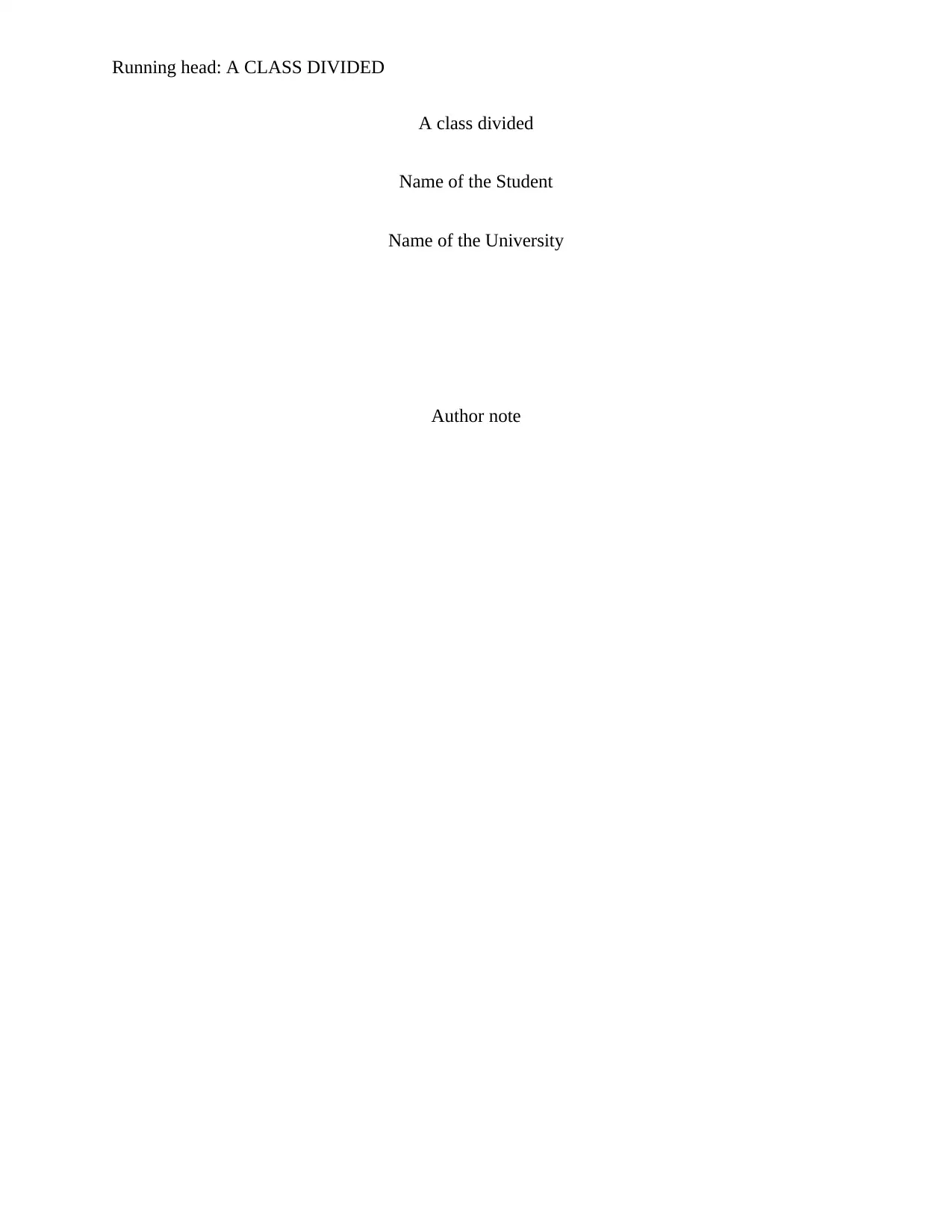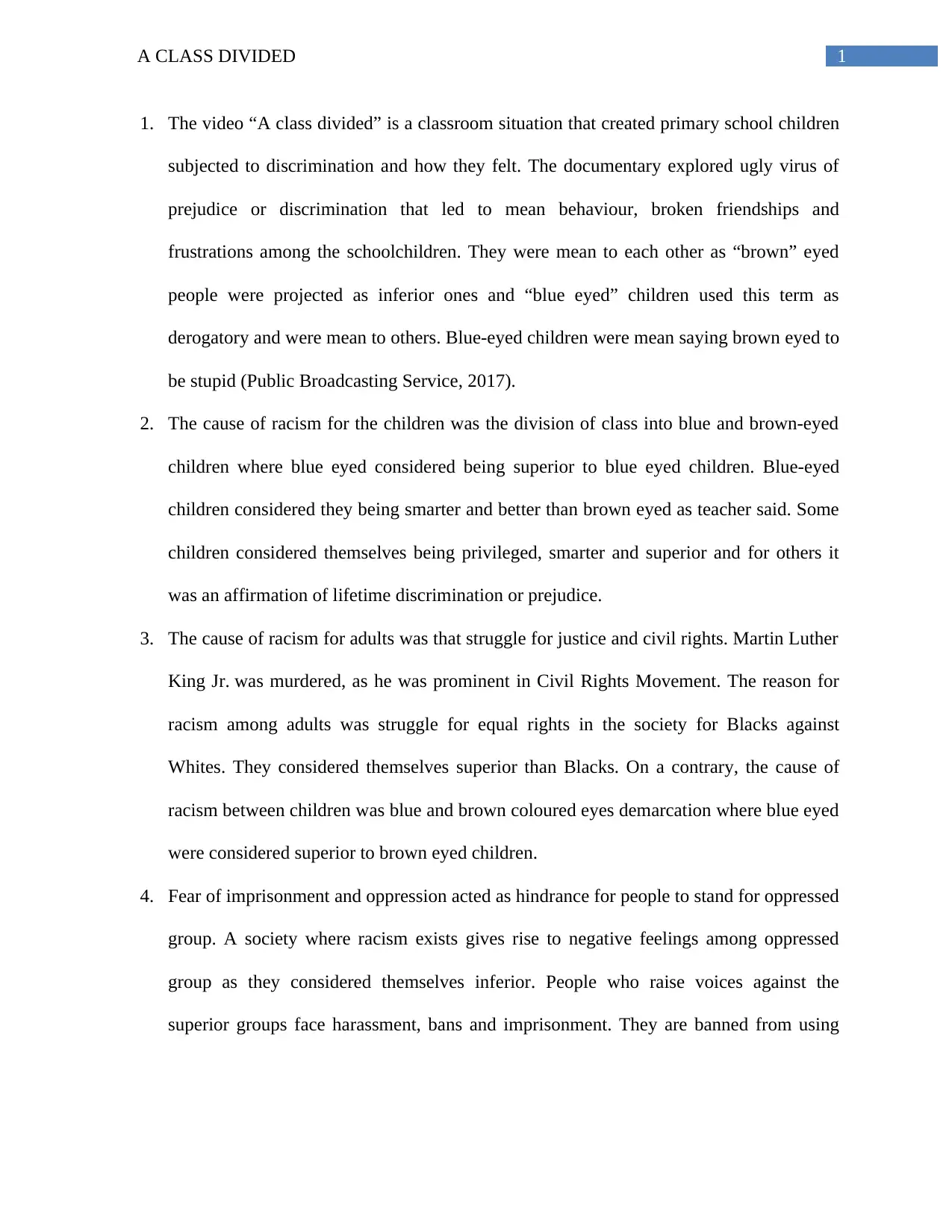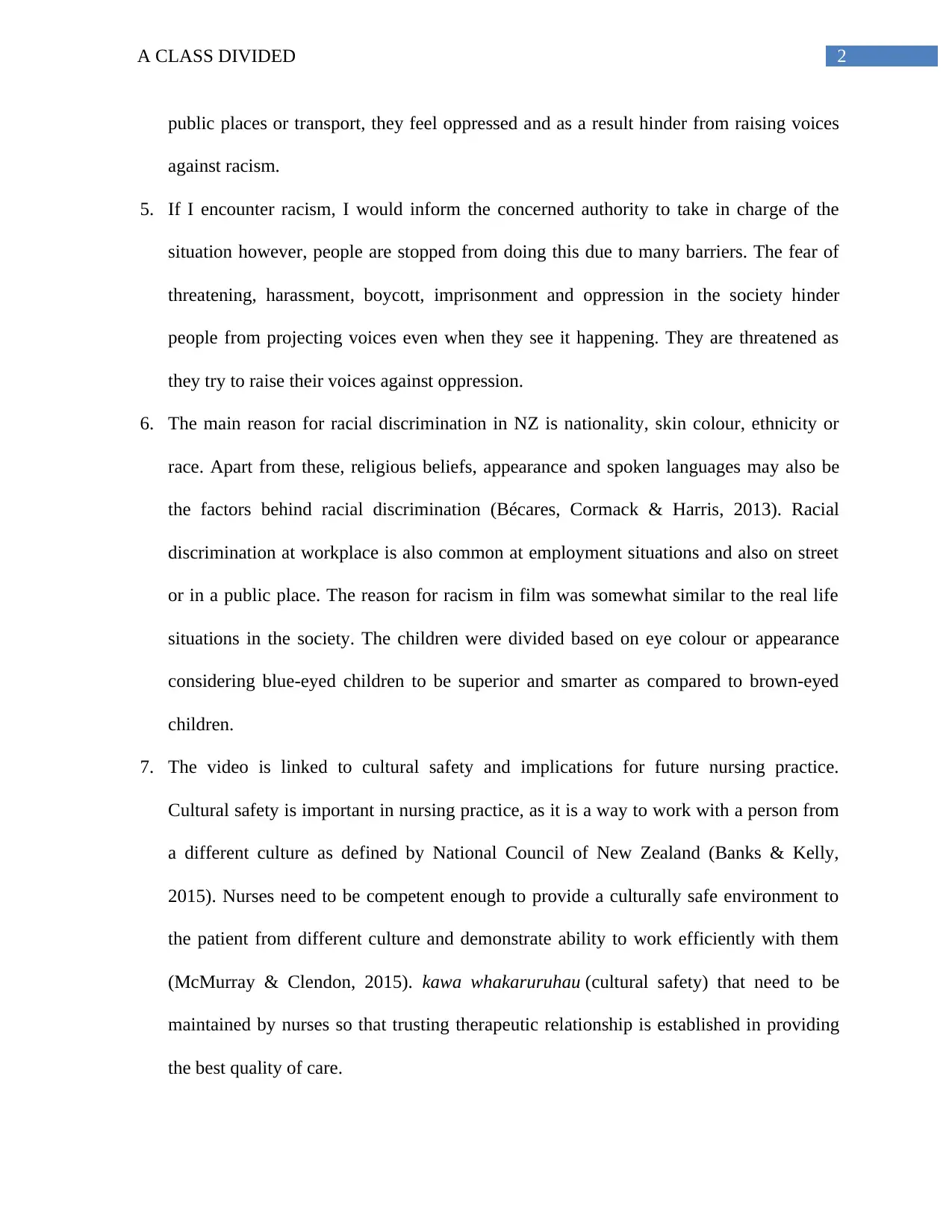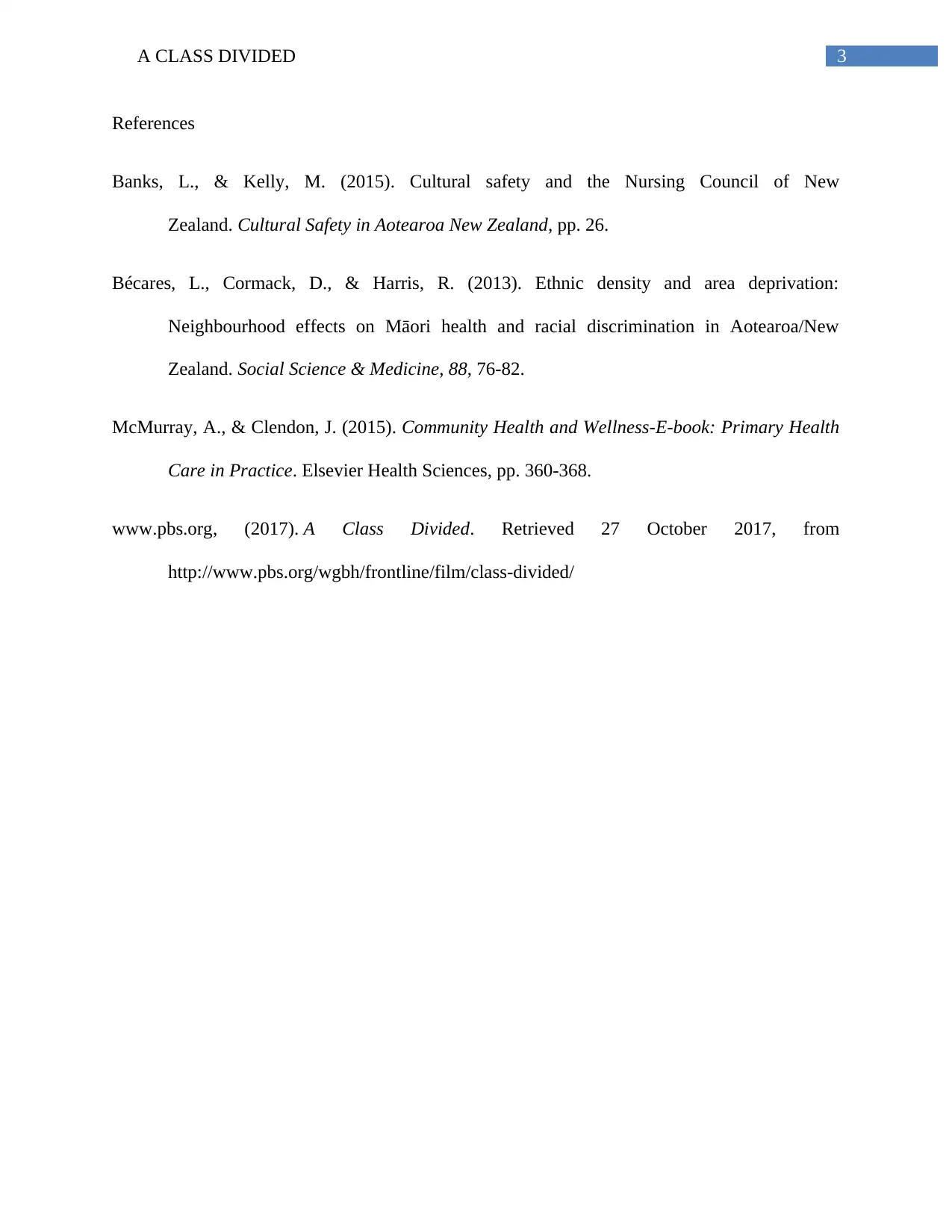Sociology Essay: 'A Class Divided' Documentary Analysis and Reflection
VerifiedAdded on 2020/05/11
|4
|768
|161
Essay
AI Summary
This essay analyzes the documentary 'A Class Divided,' which depicts a classroom experiment where children are divided based on eye color to illustrate the effects of discrimination and prejudice. The essay examines the causes and consequences of racism, both within the context of the documentary and in broader societal terms. It discusses how the children's experiences reflect real-world issues of inequality and the impact of fear and oppression. Furthermore, the essay connects the documentary's themes to cultural safety in nursing practice, emphasizing the importance of nurses providing culturally competent care and establishing trusting therapeutic relationships to address and combat racial bias. The analysis includes references to relevant literature on cultural safety and racial discrimination in New Zealand.
1 out of 4











![[object Object]](/_next/static/media/star-bottom.7253800d.svg)